I've had an idea for a low control load variable cant angle T foil for some time. Initial development was with a radio controlled kite board with 2 Blue Robotics T200 thrusters and mostly 3d printed foil components. That was done in Perth. It was sufficiently successful to warrant development on something bigger. Here is a short test (10 seconds) of the RC version:
The mechanism is as follows: The stock of the strut is near the leading edge. The bottom of the stock is in a self aligning bearing. That allows full rotation about the yaw axis (ie vertical) and about 20° about cant and rake axes. A torque arm extends from the top of the strut to the rear. This is connected to a control arm which essentially sets the position of the end of the torque arm. In the next video, where the movement is more obvious, the control arm is first set to target zero cant angle. As the vessel speeds up, the flow over the strut drives the cant angle to zero angle of attack. Moving the control arm inboard creates an angle of attack on the strut. When the vessel moves (and even with just the 2 knots or so of tidal current), the hydrodynamic lift on the strut induces an increase in cant angle. As that happens, the geometry is such that the fixed rear point of the torque arm causes the angle of attack to reduce. An equilibrium cant and angle of attack results. At the low speeds tested today the cant angle was quite stable. If the strut and T foil were weightless, the equilibrium angle of attack would be zero. As there is some weight to be lifted, the equilibrium angle of attack is positive but small.
Having observed the cant response at low speed, the next objective was to fly the hull. There was sufficient variation in the rake angle to encourage caution in this test. Rake angle was controlled by lines going forward from about 300mm below the rake axis (the self aligning bearing) and 240mm above the rake axis (ie from the top of the stock). Although there were 3:1 purchase systems on both these lines, fixing the rake angle was problematic. A priori analysis had suggested that drag on the strut and T foil, as well as lift from the T foil, would all generate negative rake torque (where positive means the bottom goes forward). The only rake control installed on the previous test was a line to resist this negative torque. However, with a positive rake perturbation, the lift vector may have come sufficiently forward to generate positive torque. As nothing was resisting this, positive feedback arose - higher rake angle means higher angle of attack on lifting foil which generates more lift hence more torque. The result was that the mounting steel beams were twisted out of the composite beam of the proa. That was the end of that test.
For this test, we started with both crew on the long hull - so the small flying hull was very lightly loaded. Take off speed was a little under 5knots - so perhaps around 7 knots of water speed (going against about 2 knots of tide). It was pleasing to observe the marked diminution in engine load when we took off - the whole point of the foil is to reduce the overall drag.
We decided not to test at higher speeds, or with the small hull loaded, until the mounting system has been re-engineered. The cant angle range needs to be greater and the rake angle range needs to be at least 180° - the foil needs to "kick up" if it hits anything. The rake control also needs to be improved.
Thanks to GS for help today and for some mounting suggestions (not all adopted). Thanks Rob for Elementary and the carbon used to beef up the mount. Thanks to Brett and Mike for suggesting the self aligning bearing - although that won't be used further, it provided the means for a relatively simple first test.
20230203 update: With improved rake control, Graham assisted with another trial on the river. With more confidence in the foil mounting hardware, the objective was testing at higher speeds. The cant control was again good, flight was stable and speed was not too bad:
